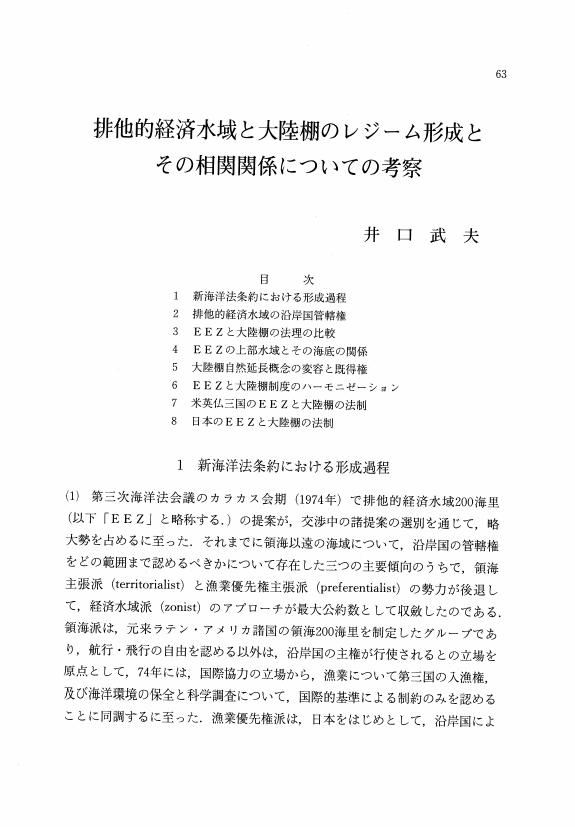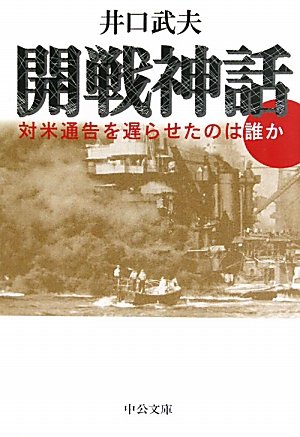2 0 0 0 OA 対米最終覚書と米大統領の親電の解読工作をめぐる史実の再検証
- 著者
- 井口 武夫
- 出版者
- JAPAN ASSOCIATION OF INTERNATIONAL RELATIONS
- 雑誌
- 国際政治 (ISSN:04542215)
- 巻号頁・発行日
- vol.2006, no.144, pp.85-98,L13, 2006-02-28 (Released:2010-09-01)
- 参考文献数
- 46
60 years after the Pacific War, Japanese Foreign Ministry published on October 14 2004 relevant documents related to Japan's Final Memorandum delivered to the U. S. Government at the outbreak of the War. The documents were found in the files of diplomatic archives by the author in 1999. They reveal that the Ministry was supposed to submit to the U. S. Government the Final Memorandum which was originally worded to express an intention to enter into war. This formula was not accepted and the Memorandum was changed to simply inform Japan's intention to terminate the Japan-U. S. negotiations. When Final Memorandum which was divided in fourteen parts was cabled to the Japanese Embassy in Washington, the 14th cable embodying the concluding paragraph was withheld for 15 hours while its phrase underwent subtle wording change. A withholding of cabling the final phrase as well as additional corrigenda for 15 hours caused a fatal delay in transmitting the Memo to the State Department at 1:00 p. m. (Washington time), just before Pearl Harbor attack.There had been no serious in-depth investigation by the Japanese Government to pursue the reason for suspending the telegram of the 14th part of the Memo at the Tokyo side, and in its stead, a wrong search focused on a confused cable-handling and typing of the Final Memorandum by the Japanese Embassy. The delayed dispatch of final part of the Memo could be traced to an obstruction made at Tokyo Central Telegraph Office on the same day in connection with a clandestine army operation carried on by Major Tomura of Communication Section of Japanese Army's General Command when they withheld for ten hours the American President's message to the Emperor. During the seizure of Roosevelt's message, it is conclusively analyzed that a secret decoding was done by the Army before its delivery to the U. S. Embassy at 10: p. m. on December 7 (Japanese time). Major Tomura admitted later that he feared the Emperor might be induced to accommodate the President's appeal to delay the war. This Paper examines that the Foreign Ministry must have been informed of the decoding, and therefore, it had to adjust the wording of the last paragraph of the Final Memo to respond to the final position of the U. S. Government. Also a cover-up of delayed dispatch of correcting cables to Washington was made to block reinvestigation up till now.Author observes that President's Message intended to delay war with Japan since he preferred to fight with Hitler first. Roosevelt opted for a last-minute attempt to send his Message directly to the Emperor to avoid war, as suggested by the Japanese Embassy.
2 0 0 0 OA 排他的経済水域と大陸棚のレジーム形成とその相関関係についての考察
- 著者
- 井口 武夫
- 出版者
- 世界法学会
- 雑誌
- 世界法年報 (ISSN:09170421)
- 巻号頁・発行日
- vol.1998, no.17, pp.63-101, 1998-03-20 (Released:2011-02-07)
- 参考文献数
- 36
2 0 0 0 OA 三輪宗弘著『太平洋戦争と石油』
- 著者
- 井口 武夫
- 出版者
- 財団法人 日本国際政治学会
- 雑誌
- 国際政治 (ISSN:04542215)
- 巻号頁・発行日
- vol.2009, no.155, pp.155_169-175, 2009-03-20 (Released:2011-07-10)
1 0 0 0 OA 学級における同調圧力がもたらす否定的側面とその改善を検討した先行研究の展望
- 著者
- 井口 武俊 河村 茂雄
- 出版者
- 早稲田大学大学院教育学研究科
- 雑誌
- 早稲田大学大学院教育学研究科紀要 : 別冊 (ISSN:13402218)
- 巻号頁・発行日
- vol.28, no.2, pp.173-181, 2021-03-30
1 0 0 0 開戦神話 : 対米通告を遅らせたのは誰か
1 0 0 0 OA 1A1-C03 シロアリ防除ロボットの性能評価実験
- 著者
- 土井 智晴 生熊 嶺 西山 敦 小林 正志 井口 武 伊能 崇雄
- 出版者
- 一般社団法人 日本機械学会
- 雑誌
- ロボティクス・メカトロニクス講演会講演概要集 2010 (ISSN:24243124)
- 巻号頁・発行日
- pp._1A1-C03_1-_1A1-C03_2, 2010 (Released:2017-06-19)
We develop termite prevention-of-the-breeding and extermination robots system. This robot system is applied technology of rescue robot system. The most important feature of this robot system is in collaboration with a worker to protect house from termites. Therefore, these robots are design according as safety guideline for service robots. The name of the robots system is named "mirubo". This research shows the method of evaluations for the mirubo III. The evaluations include main five examinations as mobility exam, velocity exam, illumination exam, injection exam and step-over-performance exam.
1 0 0 0 IR 国際法における集団的自衛権の法理をめぐる問題と最近の動向
- 著者
- 井口 武夫
- 出版者
- 尚美学園大学総合政策学部
- 雑誌
- 尚美学園大学総合政策研究紀要 (ISSN:13463802)
- 巻号頁・発行日
- no.2, pp.1-32, 2001-10
Main purpose of this study is to analyze the concept and juridical nature of collective self-defence under the U.N.Charter and customary international law. The analysis covers the formulation of the right of self-defence prior to the establishment of the U.N.Organization and the drafting process of articles relating to collective self-defence in the U.N.Charter. Also the legal position of collective self-defence in the collective security system of the U.N. is analyzed. Important theories and latest practices of collective self-defence are explained and evaluated, including the function of Security Council and the Judgment of International Court of Justice, in Nicaragua's case. The study extends to the difference between individual and collective self-defence, as well as the controversy on legality and legitimacy of humanitarian intervention and of the use of force on the issues of unilateral intervention and armed reprisal Another major theme of this paper is to study Japan's constitutional and political constraints concerning collective self-defence and attitude of Japanese Government is closely observed. It has touched on U.S.-Japan security cooperation and the latest case of Guideline on defence cooperation..
1 0 0 0 ラッカセイ分枝形態の栽植密度反応
- 著者
- 財津 昌幸 古明地 通孝 田中 滋郎 井口 武夫
- 出版者
- 日本作物学会
- 雑誌
- 日本作物学会九州支部会報 (ISSN:02853507)
- 巻号頁・発行日
- no.49, pp.70-72, 1982-12-10
1栽植株間の広狭に対する株当総分枝数の増減には品種間差がみられ,タチマサリは株問とする25〜7.5?の問では増減しないが,ナカテユタカ,千葉半立は株間を広げるほど増加した。2ナカテユタカと干葉半立は株問25?以下の株当総分枝数ではほとんど品種問差異が認められなかったが,株問426棚の疎植区では干葉半立の分枝発生が著しく多くなり,両品種の特性の差が明確になった3.子葉節分枝の節間長が最長となる節位は,タチマサリでは株問を変えても比較的基部の第5〜第6節間にあり,変化しないが,ナカテユタカは株間が狭くなるにつれ上位節に移動し,干葉半立はすべて上位節に位置した。


